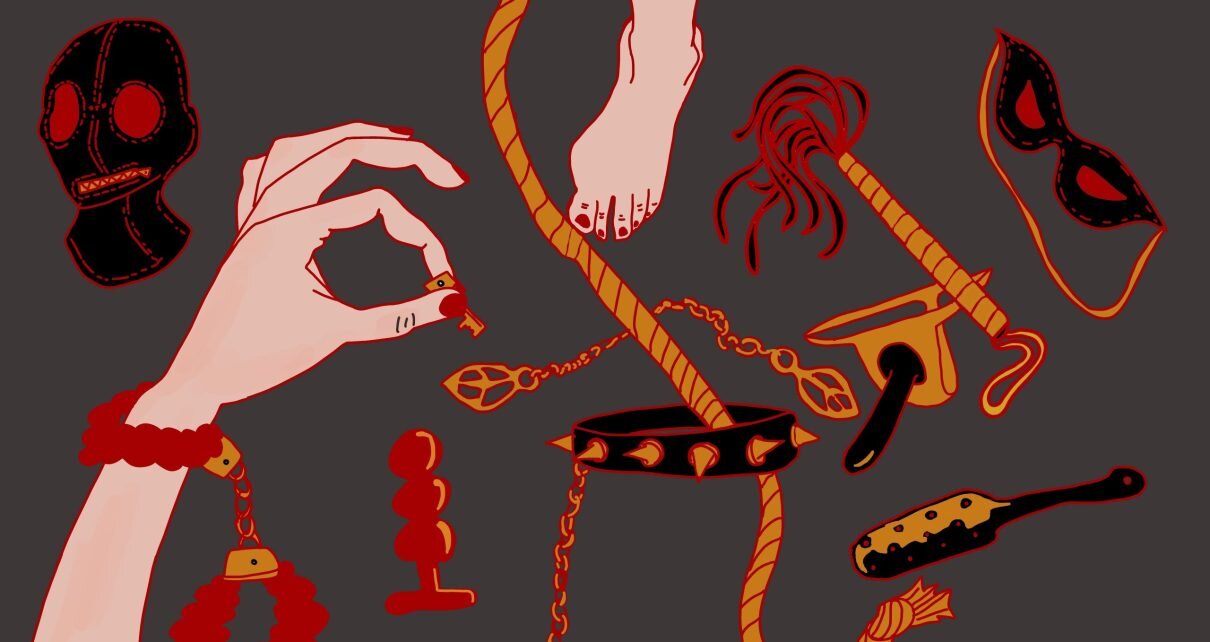Why Our Kinks Don’t Define Us
It can be easy to project our own biases and judgments onto others especially when it comes to historically taboo topics like sex, or--G*d forbid--kinky sex. I fell victim to this when I began my educational voyage into the world of BDSM which generally refers to sexual activity involving bondage and discipline, dominance and submission, or sadism and masochism. Although I am still working to confront and untangle my own harmful biases surrounding this topic, here is my journey so far.
My initial introduction to BDSM and kinky sex was probably through the Rice Purity Test which continues to fascinate tweens, teens, and even my fellow college-aged peers. The test consists of 100 questions gauging the participant’s exposure and experiences with physical intimacy. Some questions ask if the participants have ever romantically held someone’s hand while others inquire about voyeurism and handcuff usage in the bedroom. My exposure to the test was primarily for the function of shaming; there were constant judgments of whether one’s score was “too low” or “too high” for their age level which firmly nested my exposure to BDSM and kinks in a spiral of shame. In my young mind, anything other than good ol’ fashioned missionary was too outside the norm, but still, I was wary of being labeled “vanilla.”
A more accurate description of my first exposure to BDSM and kinky sex came further into adulthood when I was thrust into the rampant hookup culture of my small liberal arts college. College was like high school on steroids where everyone knew everyone else’s business except now there was the added variable of sex and physical intimacy thrown into the mix. Hookup stories circulated wildly as the first-year class was thrown into a frenzy of pent-up sexual energy including quiet whisperings of if a girl was too eager to engage in “freaky” activities or too prudish to even entertain the idea of something non-basic.
I began to question if I was “too vanilla” in my sexual preferences and if this would perhaps throw off potential partners. I made my mind up to be more sexual, assertive, and dominant despite my dwindling comfort levels. This feeling of sexual inadequacy was heightened by the experiences my friends seemed to be having all around me. It appeared everyone I knew was either not having sex or having the kinkiest sex I could even imagine including being bound and blindfolded, slapped/doing the slapping, or engaging in wild roleplay scenarios. There was no balance or equilibrium. Part of this is probably due to my need to see things as either black or white, extreme or entirely basic, kinky or vanilla, but it only fed my deep-seated insecurity surrounding my lack of kinks.
This thought pattern was only disrupted when I began to notice the bleed-over of kinky sex to toxic relationships, especially as shown in films and television shows. I became obsessed with psychoanalyzing the characters and projecting individual’s sexual preferences onto their personalities and dispositions. To some extent, this worsened my preconceived notions of people who engage in BDSM or kinky sex, which I only began to realize as a harmful thought pattern when I took a comprehensive sex education class with Planned Parenthood.
This course helped me to interrogate my own biases and judgments as well as learn to open up conversations on sexual preferences with my partner. Together, my partner and I created a “Will, Won’t, Want” table including all of the activities that were off the table and which ones we were interested in trying out. Although I still returned to the Rice Purity Test every now and again, I began to understand that sexuality doesn’t have to be so binary or, in other words, that humans are not entirely vanilla or entirely kinky; we all crave some balance between these two. I am still working to navigate and unlearn my generalized views of BDSM and kinky sex, but I do feel that opening up these conversations in safe, stable environments is the best first step we can take.
